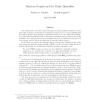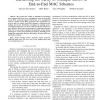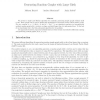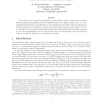26 search results - page 1 / 6 » Random graphs and the parity quantifier |
STOC
2009
ACM
14 years 5 months ago
2009
ACM
The classical zero-one law for first-order logic on random graphs says that for every first-order property in the theory of graphs and every p (0, 1), the probability that the r...
GLOBECOM
2006
IEEE
13 years 10 months ago
2006
IEEE
— We present the results of simulation experiments that compare end-to-end error management (used in controlled access MAC protocols) against hop-by-hop error management (used in...
CORR
2008
Springer
13 years 4 months ago
2008
Springer
We present a simple and efficient algorithm for randomly generating simple graphs without small cycles. These graphs can be used to design high performance Low-Density Parity-Chec...
APPROX
2009
Springer
13 years 11 months ago
2009
Springer
The r-parity tensor of a graph is a generalization of the adjacency matrix, where the tensor’s entries denote the parity of the number of edges in subgraphs induced by r distinc...
LATA
2010
Springer
14 years 2 months ago
2010
Springer
Abstract. In property testing, the goal is to distinguish between structures that have some desired property and those that are far from having the property, after examining only a...



